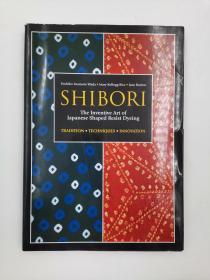
现货Art and Resistance: Studies in Modern Indian Theatres[9782807610941]
¥ 540 九五品
仅1件
作者Figueira, Dorothy
出版社P.I.E-Peter Lang S.A., Editions Scientifiques Internationales
ISBN9782807610941
出版时间2019-04
装帧平装
纸张其他
页数332页
正文语种英语
上书时间2024-04-01
- 最新上架
商品详情
- 品相描述:九五品
- 商品描述
- This volume begins with the assumption that Hindu should not be conflated with Indian (as in the case of Orientalist criticism of Indian theatre) and that modern Indian theatre need not have its starting point in classical Sanskrit drama (as many Indologists would assert). Rather, this volume uses the insights of reception theory''s critique of nationalist historiography to explore a possible framework with which one might theoretically locate the issues inherent in the terms modern Indian theatre. Following the work of the eminent Indian comparatist, Sisir Kumar Das, this volume looks at how modernity in Indian theatre entails attempts of various Indian language groups to adjust to the forced cohabitation with both foreign and indigenous traditions. Rather than looking at Indian theatre as solely a process of Westernization or Sanskritization, this book looks at it as a response. The aesthetics of reception is then seen as a transactional and dialogical process wherein one is not always just responding to the Western or the classical Indian contexts. As opposed to most postcolonial and Indological readings, this volume traces the domain of the social imagination that has shaped modern Indian sensibilities across various languages and thereby resisting the hermetic aesthetic of reliance on hegemonic languages such as Sanskrit and English. The cover tries to reflect the overall approach of the volume. A theatrical play begins with the lighting of the ritual lamp to signify drama being given to humanity by Brahma, the Creator. According to the compendium on dramatic arts (The Natyashastra, chapter 21), the hand gesture depicted here heralds the ensuing dramatic action.
相关推荐
-
![现货 Support and Resist: Structural Engineers and Design Innovation[9781580931878]](https://www0.kfzimg.com/sw/kfz-cos/kfzimg/17733071/414c93c491bfea1d_s.jpg)
现货 Support and Resist: Structural Engineers and Design Innovation[9781580931878]
九五品上海
¥ 405.00
-

Shibori: The Inventive Art of Japanese Shaped Resist Dyeing
九品衡水
¥ 420.00
-
![现货Art and Objects[9781509512676]](https://www0.kfzimg.com/sw/kfz-cos/kfzimg/17733071/8c14aeea540c0464_s.jpg)
现货Art and Objects[9781509512676]
九五品上海
¥ 675.00
-
![现货Art and Science[9781498204019]](https://www0.kfzimg.com/sw/kfz-cos/kfzimg/17733071/d3349247f51040ac_s.jpg)
现货Art and Science[9781498204019]
九五品上海
¥ 313.00
-

MATERIALS AND COATINGS TO RESIST HIGH TEMPERATURE CORROSION
九品北京
¥ 85.00
-
![现货Land and Environmental Art[9780714856438]](https://www0.kfzimg.com/sw/kfz-cos/kfzimg/17733071/8f13a36ddfcb842e_s.jpg)
现货Land and Environmental Art[9780714856438]
九五品上海
¥ 158.00
-
![现货Japanese Art and Design[9781851775620]](https://www0.kfzimg.com/sw/kfz-cos/kfzimg/17733071/37cea818c4231dde_s.jpg)
现货Japanese Art and Design[9781851775620]
九五品上海
¥ 336.00
-
![现货Anthropology and Art Practice[9780857851796]](https://www0.kfzimg.com/sw/kfz-cos/kfzimg/17733071/20820a36f855b35b_s.jpg)
现货Anthropology and Art Practice[9780857851796]
九五品上海
¥ 563.00
-
![现货Art and Abstract Objects[9780199691494]](https://www0.kfzimg.com/sw/kfz-cos/kfzimg/17733071/7c60a30690e95cea_s.jpg)
现货Art and Abstract Objects[9780199691494]
九五品上海
¥ 563.00
-
![现货Nature: Art and Structure[9783833152429]](https://www0.kfzimg.com/sw/kfz-cos/kfzimg/17733071/984f323dbc65065a_s.jpg)
现货Nature: Art and Structure[9783833152429]
九五品上海
¥ 384.00
— 没有更多了 —
![现货Art and Resistance: Studies in Modern Indian Theatres[9782807610941]](https://www0.kfzimg.com/sw/kfz-cos/kfzimg/17733071/52617a689034852d_b.jpg)

![现货Materials and Technologies of Modern Production[9783036401683]](https://www0.kfzimg.com/sw/kfz-cos/kfzimg/17733071/5fd2824531e165d7_s.jpg)
![现货Introduction to Container Ship Operations and Onboard Safety[9781032155425]](https://www0.kfzimg.com/sw/kfz-cos/kfzimg/17733071/58b7ff43ef7909ee_s.jpg)
![现货Electrophosphorescent Materials and Devices[9789814877343]](https://www0.kfzimg.com/sw/kfz-cos/kfzimg/17733071/18cc1d77bcb7b488_s.jpg)
![现货Organic Semiconductors for Optoelectronics[9781119146100]](https://www0.kfzimg.com/sw/kfz-cos/kfzimg/17733071/24c85a750c708964_s.jpg)
![现货Advances in Food Rheology and Its Applications[9780081004319]](https://www0.kfzimg.com/sw/kfz-cos/kfzimg/17733071/e0c11603c9119d4d_s.jpg)
![现货Advanced Materials and Sustainable Technologies[9783035727562]](https://www0.kfzimg.com/sw/kfz-cos/kfzimg/17733071/dced675333874c48_s.jpg)
![现货Advanced Materials and Manufacturing Engineering II[9783035712681]](https://www0.kfzimg.com/sw/kfz-cos/kfzimg/17733071/660ccfae75fa8d3e_s.jpg)
![现货Materials in Machinery and Construction[9783035718119]](https://www0.kfzimg.com/sw/kfz-cos/kfzimg/17733071/6f402060775e9daa_s.jpg)
![现货Cereal Grain Quality (Softcover Reprint of the Original 1st 1996)[9789401071772]](https://www0.kfzimg.com/sw/kfz-cos/kfzimg/17733071/f93ca1c96a97403a_s.jpg)
![现货Art and Resistance: Studies in Modern Indian Theatres[9782807610941]](/dist/img/error.jpg)
以下为对购买帮助不大的评价